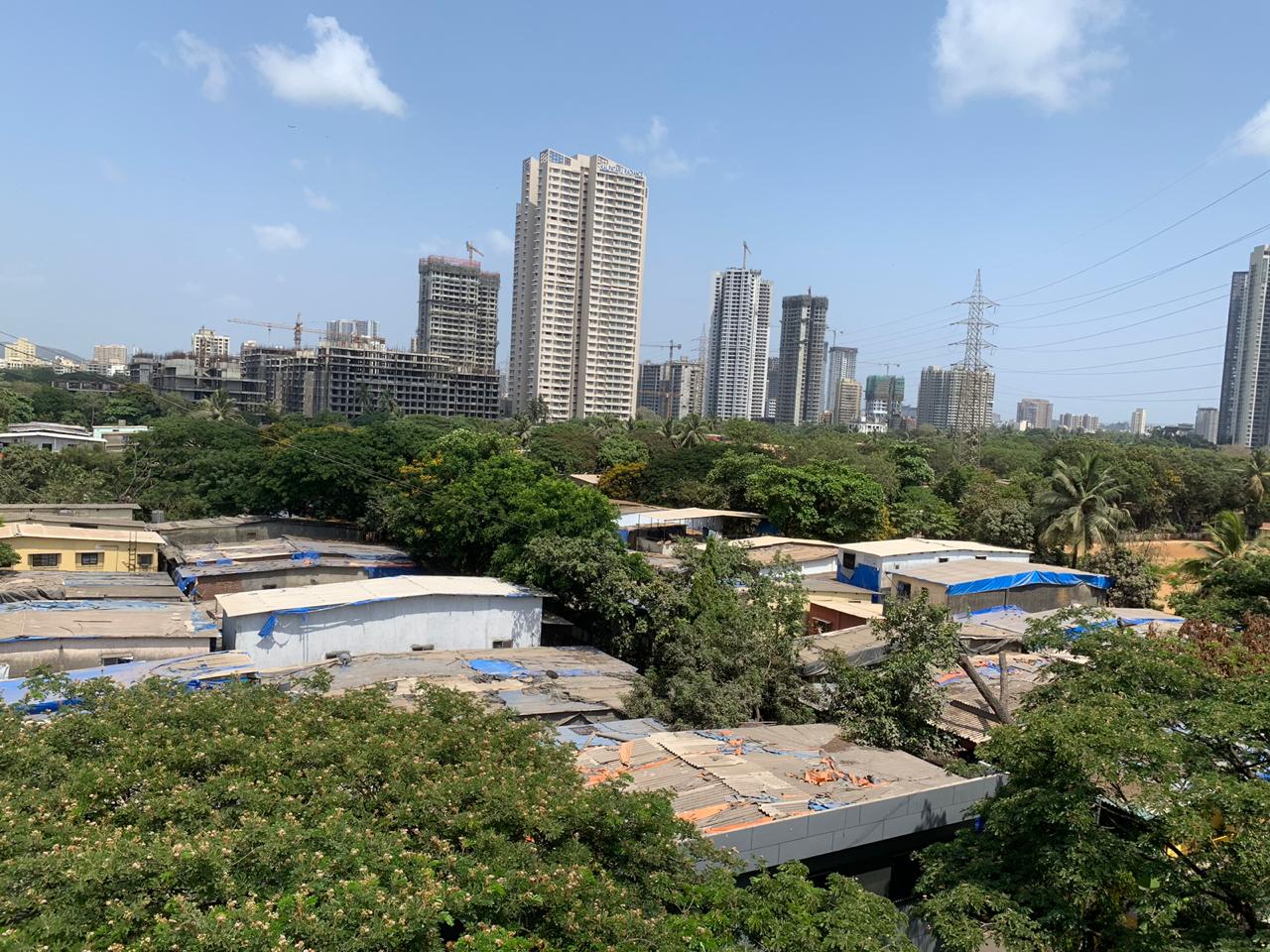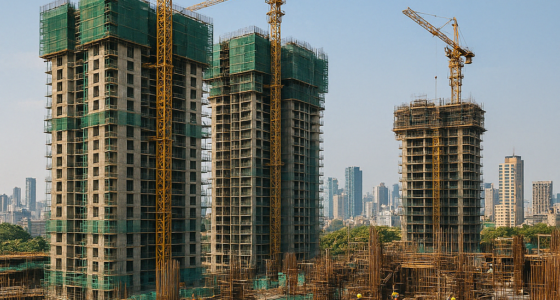Property Share unveils a report on the dynamic landscape of office supply trends, building on the data sourced from JLL. Titled “Supply Trends” this ground-breaking report provides a detailed analysis of the office space supply in four major Indian cities: Hyderabad, Bangalore, Mumbai, and Pune. It covers key aspects such as the current and expected supply of Grade A office space, market dynamics, vacancy rates, rental trends, and recommendations for commercial real estate investors.
Kunal Moktan, Co-Founder & CEO of Property Share, said, “As an investment platform focused on delivering strong risk-adjusted returns to its investors, Property Share considers market supply and demand as one of the cornerstones of its underwriting. We realized that the market reports on supply by IPCs did not comprehensively capture the true building-wise data that is crucial in making investment decisions. This led us to start our own supply study that we believe is a lot more granular and helpful to the larger investment community.”
KEY HIGHLIGHTS BY CITY
HYDERABAD
· Over the years, Hyderabad has expanded to the west from the old CBD areas of Jubilee Hills to HITEC City and Gachibowli. Strong infrastructural support from the Telangana government led to the emergence of HITEC City as one of India’s leading IT corridors attracting multinational tenants like Qualcomm, JP Morgan, Google and Microsoft
· The city has 2 key micro-markets – HITEC City (with 61% of stock) and Gachibowli (with 29% of stock)
· Since 2019, there is a significant surge in the annual supply addition and the same trend is expected to continue till 2025. The sudden increase is attributable to the spillover of IT demand from Bangalore and the unlimited FSI policy in Telangana which is not available to developers in other cities
· HITEC City is almost saturated, and newer expansion is predominantly expected in Gachibowli due to land availability
· HITEC city is the strongest market in Hyderabad with steady upcoming supply leading to moderate rental growth and has a steady supply of about 10.5 mn sf till 2025, increasing the stock in the micro-market from 69.1 mn to 79.6 mn sf (15% increase)
· This will attract healthy space take-up of the upcoming supply (vacancy expected to remain around 15-16% till 2025). Moderate rental growth of 3% per annum can also be expected
· Gachibowli is an emerging market in Hyderabad with significant upcoming supply leading to higher expected vacancy levels and has a strong supply pipeline of 24.1 mn till 2025, increasing the stock significantly from 33.1 mn sf currently to 57.2 mn sf (73% increase)
· With the supply numbers increasing every year, vacancies are also expected to increase to 40% and rentals are expected to be flat
· For commercial real estate investors considering Hyderabad, it is advisable to stick to pre-leased office opportunities in institutional quality buildings in HITEC city with long lock-ins or where the tenant has completed fitouts
· By the end of 2025, 40 mn sf of Grade A supply is expected to be added in Hyderabad increasing the city’s supply to 148 mn sf (37% increase) At the end of H2 2023, Hyderabad’s office market vacancy rose to ~24%, up from ~15% in 2021
· This is majorly due to the huge supply that was added into the market in recent years in anticipation of high levels of absorption similar to 2019 levels
BANGALORE
· IT companies started setting up in the CBD in the mid-1980s. As the demand from global IT firms far exceeded the available space in CBD, large development was seen in suburban markets like Electronic City & Whitefield by the early 2000s
· By 2002, the Outer Ring Road (ORR) was constructed to ease traffic into the CBD which was instrumental in transforming Bangalore into the Silicon Valley of India and thereafter, ORR emerged as India’s largest office market
· The city has 7 micro-markets – ORR (Outer Ring Road) (43% of stock), Whitefield (24%), SBD South (7%), Electronic City (5%), CBD (4%), SBD North (4%) & Peripheral North (3%)
· Of the total supply of office space expected to hit the market by 2025, ~11 mn sf (~33%) is located at ORR (North & South), the largest office market in India
· Today, ORR-South is the most preferred destination for MNCs in India with over 67 million sq ft. of Grade A stock,
· The market’s vacancy has increased from 1% (pre-pandemic) to 6% which is still half of the 12% vacancy across Bangalore
· While rents in ORR–North have increased by 4.3% annually since 2018, new supply addition combined with consolidation by some large occupiers post-pandemic has increased the vacancy levels (from ~0% to 14%) due to which future rental growth in the market will be slower
· Despite the higher vacancy levels, Bangalore’s stature as the leading office market in India is unlikely to be disputed in the near future due to the presence of a robust ecosystem, strong talent pool availability, quality office stock and planned (albeit slow) infrastructure developments
· Average monthly rental values have already reached ~INR 100/sq ft, making the market relatively expensive for cost-sensitive occupiers
· Whitefield, the 2nd largest market in Bangalore received fresh impetus in 2023 with metro connectivity to the CBD
· Prevailing rents of ~Rs 52-55/sq ft has ensured Whitefield enjoys spillover demand from ORR market keeping the market attractive
· Currently, vacancy levels are too high in certain pockets (~37% in SBD North and ~70% in Peripheral North markets) due to slower than anticipated demand uptick
· For CRE investors considering Bangalore, it is advised to stick to pre-leased office opportunities in ORR/Whitefield markets where institutional supply is coupled with good tenant profiles
· While other markets like SBD South/SBD North can be considered on a case-to-case basis, it is advisable to stay away from Peripheral North market for now
PUNE
· Indian IT companies started to enter and develop the Pune office market in the early 2000s near Hinjewadi in the Western Suburbs micro-market; due to its proximity to Mumbai
· The city has 4 key micro-markets – SBD East (55% of stock), Western Suburbs (20% of stock), SBD West (14% of stock) and CBD (9% of stock)
· The annual supply addition seen in Pune has been around 3.5 mn sf till 2021 (barring 2020)
· However, due to lower vacancy and robust demand dynamics, major institutions are elevating the supply levels in Pune
· SBD East is the strongest market in Pune with low vacancies and high rental growth prospects
· It has a consistent annual supply in the range of 2.5- 3.8 mn sf which will come online over the next 3 years
· Despite the increased supply levels, the vacancy in this micro-market is expected to stay below 10%, lower than the projected city average of 13%
· The rentals are also expected to increase from INR 85 psf to INR 93 psf by 2025 (annual growth rate of 3%)
· SBD West is an emerging market in Pune with strong physical and social infrastructure that has seen rapid development in the last 5-6 years due to a large residential catchment and a good social ecosystem, now also enhanced with metro connectivity
· The future supply pipeline has tapered (~0.8 mn is the average annual supply expected till 2025) compared to the past
· The western suburbs of Pune comprises Hinjewadi and the vacancy levels have shot up from 7-8% pre-pandemic to 19% currently due to the vacation of space by large occupiers
· At the end of H1’23, Pune’s office market vacancy was ~10%, much lower than the Pan India vacancy levels of ~16%
· Historically, the supply addition in Pune has ranged between 3-4 mn sq ft every year with a total ~12 mn sq ft of office stock added between 2018 to 2021
· The lower vacancy levels have attracted developers to elevate the supply levels with a substantial ~24 mn sq ft of expected supply (2x the previous 4-year period) being added between 2022 to 2025
· However, Pune as a market has continued to attract a diverse occupier pool (across IT/ITEs, manufacturing, automotive, managed office etc), keeping the demand correspondingly robust
· For CRE investors considering Pune, it is advised to invest in SBD East and SBD West markets. Low vacancies and strong demand from IT and managed office firms make these markets very attractive. Investors may choose to invest in CBD only if there are risk-adjusted deals like campus style assets (portfolio of tenants) or longer lock-ins.
MUMBAI
· The office market in Mumbai started to develop near Nariman Point and Fort which was the original CBD of the city with various government buildings as well as the Bombay Stock Exchange
· As the space in South Mumbai is limited, development started shifting northwards towards Lower Parel, BKC and the Western Suburbs. BKC has now emerged as the 2nd CBD of Mumbai
· As the IT demand started shifting to India, regions towards the East like Powai, Thane and Navi Mumbai and started seeing office stock for cost-conscious tenants due to more land availability and lower land prices
· The city has 9 key micro-markets – Nariman Point/Fort, BKC, Lower Parel, Andheri, Navi Mumbai, Thane, Powai, BKC Fringe and Goregaon/Malad
· The annual supply seen in Mumbai has been around 4.8 mn sf till 2022 and a similar supply level is expected over the next 3 years
· An uptick in 2021 was seen as a spillover of COVID. Of the total supply of 12.4 mn sf expected to hit the market by 2025, ~46% is expected in Navi Mumbai and Thane while ~44% is expected in the Western Suburbs like Andheri, Powai and Goregaon/Malad
· Nariman Point/Fort was the original front-office market in Mumbai before large IT and financial services firms started to dominate demand. There is a major paucity of land in this market and hence there has been no supply in the market since 2018 and hence vacancies remain in single digits
· Lower Parel has transformed into one of Mumbai’s premier retail and office markets over the last 2 decades. The market enjoyed low vacancies till 2022 when completion of large projects by Blackstone and Lodha increased the vacancy from 8% to 19%
· By 2025, ~21 mn sf of new Grade A supply is expected to be added in the MMR region, thereby increasing the city’s total stock to over ~169 mn sf (14% increase). The increase in supply is predominantly dominated by Navi Mumbai (~5 mn sf), Andheri (~4 mn sf) and Thane (3.5 mn sf) markets.
· At the end of H1 2023, Mumbai’s office market vacancy was ~14%, marginally lower than the Pan India vacancy levels of ~16%
· Core markets like BKC, Fort, Powai, and institutional markets like Goregaon/Malad market have comfortable vacancy levels below 10% whereas back-office markets like Navi Mumbai/Thane still exhibit elevated vacancy levels
· Historical supply addition in Mumbai in the 4-year period between 2019-2022 was ~22 mn sq ft but vacancy levels (overall city level) have remained stable at ~14%
· Future supply addition is commensurate with historical supply/absorption and the ~21 mn sq ft of expected supply being added between now and the end of 2025 will not see increased vacancy levels
· Investors should avoid markets like Navi Mumbai and Thane unless prices are significantly attractive, campus style opportunities arise or there is a long lock-in period remaining on the lease
· Similarly, non-institutional opportunities in suburbs like Andheri etc are to be avoided due to limited growth prospects
· While Investors can consider markets like BKC, it is important to buy larger floors and get good entry points, since the already high capital values could limit value generation potential
Also Read: Mumbai achieves best in 11-year property registrations in 2023









